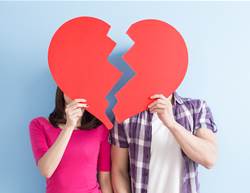Throw one of these in over brunch and it's likely you'll stop the conversation in its tracks. So we went straight to the doctors and sex therapists for simple, no nonsense answers.
No matter how turned on I am, it's like the Sahara down there. What's going on?
That depends. If you're perimenopausal, blame oestrogen. You need an adequate amount of this hormone to maintain vaginal lubrication, and levels naturally decline during menopause. If you're not yet in the hot flush phase, look at your meds: certain antihistamines can dry other things up, along with your nose. "Spa chemicals, caffeine and even stress can promote vaginal dryness," according to psychologist Laurie Mintz.
Mintz recommends trying some lube - the slippery feeling alone will make you more aroused, which could boost natural lubrication. She suggests a water-based or glycerin lubricant, like Sylk Natural.
Is it possible to tighten the vagina and pelvic floor?
Yes! And the training for doing so isn't all that different from training your abs or biceps. You're working muscles to make them taut - in this case, the muscles of your pelvic floor, including your vagina. "There are clinics in France for this express purpose - what they call reeducation perineale," reveals neuropsychiatrist Dr Louann Brizendine, an expert on women's hormones and sexuality. "And they work."
The therapy tightens vaginal muscles to narrow a vaginal canal that has come to feel wider [and less sensitive] due to age or childbirth."
For a less invasive option, try pelvic-floor exercises. To locate them, stop the flow next time you urinate. The muscles used are the same ones engaged during pelvic floor exercises. Do 5 to 10 daily, contracting your pelvic-floor two to four seconds at a time before relaxing.
As you get stronger (and tighter), do more and hold longer. But if these exercises cause pain or intercourse becomes painful, you might belong to the 24 per cent of women whose pelvic floor muscles are too tight, says Dr Patricia Neumann, principal of The Pelvic Floor Clinic in Adelaide and a specialist continence and women's health physio. Whether your muscles need tightening or relaxing, a pelvic examination is worth it. You can find a trained pelvic-floor physio through the Australian Physiotherapy website.
Now that online dating is so common, is sex on the first date considered more socially acceptable?
Society does seem to have moved on from those nights on your parents' porch when a peck on the cheek was as intimate as a first date got. But with 80 per cent of women over 40 feeling more confident in bed than they were in their 20s, according to the latest Prevention Sex Survey, and matchmaking websites the go-to way to meet potential partners for many, sex is definitely on the menu early on.
"The reality is, if you have a good connection with someone, the rules mostly go out the window," says relationship guru Andrea Syrtash. "That doesn't mean you don't have some strategies or follow social cues, but it means you follow your gut and your heart more than arbitrary rules that someone told you you should or shouldn't follow. Our tagline is: 'Don't trust the rules. Trust yourself.'"
Where the heck is the G-spot?
In the May 2012 issue of The Journal of Sexual Medicine, gynaecologist Dr Adam Ostrzenski claimed to have mapped the exact locale of the G-spot after years of debate. Its position?
According to Ostrzenski, it's located "on the dorsal perineal membrane, 16.5 millimetres from the upper part of the urethral meatus," (to be precise) and consists of small, grapelike clusters of erectile tissue housed in a sac less than one centimetre across and nestled between the vaginal wall's fifth and sixth layers. Obviously.
"For all you searchers, the G-spot isn't an organ," cautions sexuality expert Louann Brizendine. "It's an anatomical area, and not only does it vary greatly in exact location from woman to woman, but it's also much more defined in some women than in others. Some women experience a very specific spot that, if stimulated, leads to orgasm, but the holy grail of female sexual pleasure remains the clitoris."
Mintz agrees - vociferously. "Amen to that!" she says. "Some people say that the G-spot is a myth, but it's not. It's a complicated area where many organs meet, and its sensitivity varies, and not all women enjoy G-spot stimulation. But it does exist. The myth is that every woman has a perfect little spot that need only be touched to trigger a gargantuan orgasm. Sorry, no."
Still intent on planting a flag on your G-spot? Self-exploration isn't the surest route. "Just as a flaccid penis is very different from an erect penis, the vaginal canal is a different organ when you're intensely aroused," says Brizendine. "So it's tough to discover whether you have a very sensitive G-spot through self-exploration." She suggests experimenting with a variety of sexual positions to find one that stimulates both the clitoris and the most sensitive area of your vaginal canal. Got it!









